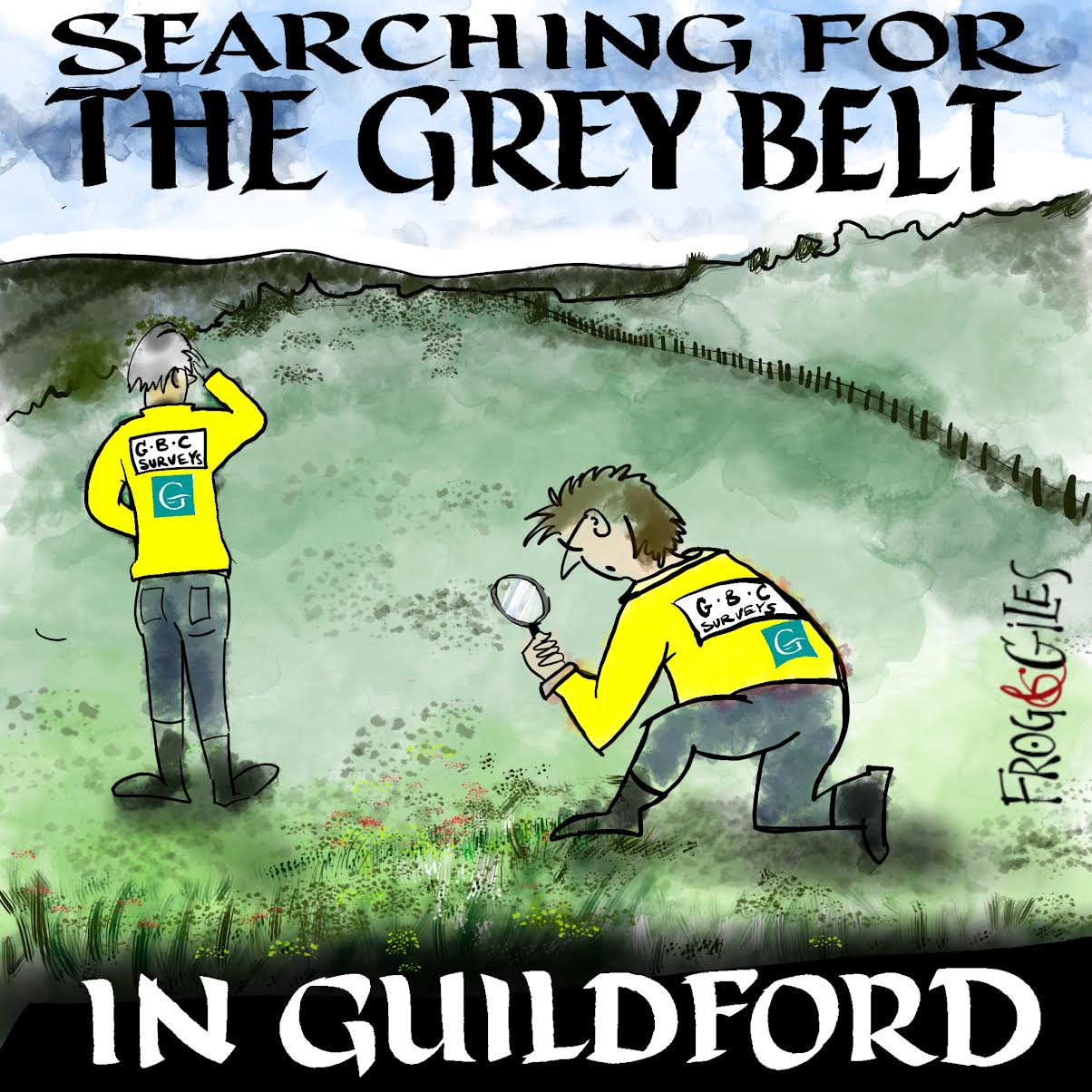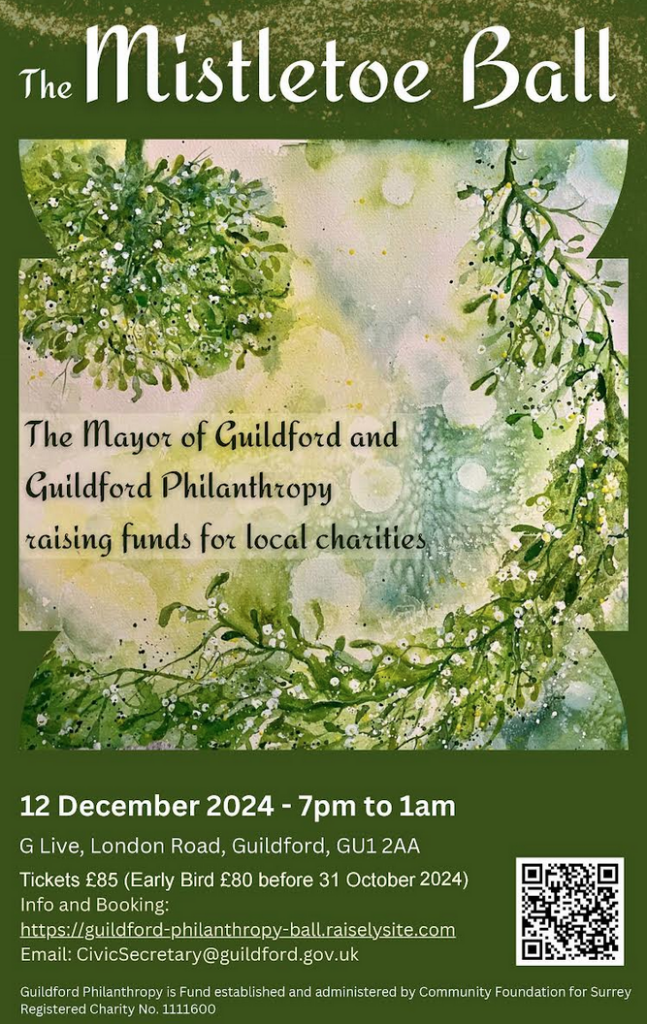- Stay Connected
 Abraham Lincoln
If given the truth, the people can be depended upon to meet any national crisis...
Abraham Lincoln
If given the truth, the people can be depended upon to meet any national crisis...
 Guildford news...
for Guildford people, brought to you by Guildford reporters - Guildford's own news service
Guildford news...
for Guildford people, brought to you by Guildford reporters - Guildford's own news service
Temperance Tavern In The Town
Published on: 28 Feb, 2012
Updated on: 28 Feb, 2012
by David Rose
Collectors like me who are also keen on local history often come together over objects that have something in common.
Trade token collector and historian John Theobald spoke to me about a token he has from a Guildford coffee tavern. I replied, telling him that I have an old fizzy pop bottle in my collection from the same place.

- The photo shows the last cattle market to be held in North Street on June 9, 1896. It was then moved to a new site in Woodbridge Road. The building that was the Royal Arms Temperance Hotel can be seen to the right. The auctioneer can be seen in front of the tent with his back to the camera. Eagle-eyed persons interested in old photos of Guildford may know that there appear to be several variations of this photo. Another shows the auctioneer turned towards the camera.
We soon put the two items together resulting in an interesting story about the Royal Arms Tavern that was in North Street.
The token and the bottle were both used in the late 19th century in an attempt to steer people away from the ‘demon drink’.
The UK’s temperance movement gathered pace during the 19th century. It made a great leap forward in 1832 when Joseph Livesey started his own movement in Preston, Lancashire. He required his followers to sign a pledge of total abstinence of alcohol.
They pledged to abstain ‘from all liquors of an intoxicating quality, whether ale, porter, wine or ardent spirits, except as medicine’.
The term teetotal comes from a speech given the following year by Dick Turner, one of Livesey’s followers. Also in 1833, Livsey opened his first temperance hotel.
Similar establishments were opened up and down the country. In 1847 the Band of Hope was founded in Leeds. Its aim was to save working-class children from the perils of drink.
Parliament was lobbied to restrict the sale of alcohol. This was often by religious groups such as Quakers and the Salvation Army.
The Nonconformists of the time were also active with large numbers of Baptist, Methodist and Congregational ministers being teetotal.
Nineteenth-century Guildford, being a market town and having several breweries, was a town of many pubs. In 1870, licences were granted to 40 pubs and beer houses in the town.
It certainly had its fair share of drink problems. In an attempt to do something about this, in 1881, the Rev Francis Paynter, the rector of St John’s Church Stoke-next-Guildford, opened a temperance hotel and coffee tavern in North Street.
In his book, The Breweries and Public Houses of Guildford, (Charles Traylen, 1990), Mark Sturley notes that Francis Paynter was an enthusiastic advocate of temperance and that he often took the chair at local temperance meetings and at his own expense organised and conducted a number of temperance missions.
The Paynter family was a wealthy one indeed. Francis had succeeded his father, Samuel, as rector of Stoke in 1862. As Guildford grew in the latter part of the 19th century and on into the early 20th century, so the Paynters funded the building of a number of churches. These included Christ Church in Waterden Road in 1867; St Saviour’s in Woodbridge Road, first in 1876 with a church made of corrugated iron, followed in 1899 by the church that stands today; and Emmanuel in Stoughton that was consecrated in 1902.
Francis Paynter died in 1908, but his widow, Julia, carried on the good work by donating money for the building of St Francis’ Church in Beckingham Road, Westborough, that opened in 1933 as a chapel of ease to Emmanuel.
The Paynters’ financial assistance and setting up of things for good causes didn’t end with places of worship, and the temperance tavern was one of these. In 1904, Julia (or Fanny) as she was locally known, set up the ‘Soldiers’ Welcome’ in a house in Barrack Road, Stoughton. Soldiers of the Queen’s regiment from nearby Stoughton Barracks could meet there in their spare time to socialise. They could receive help if needed to compose letters to family and friends. It was a teetotal alternative to the Royal Hotel just down the road!
In the booklet, Francis Paynter – A Remarkable Guildfordian, author Jeremy Collingwood, a former vicar of Christ Church, writes that Francis Paynter’s Royal Arms Temperance Hotel was not a success. However, the coffee house on the ground floor remained until 1964.
Today the former hotel building houses the Guildford Institute and the RBS bank is where the coffee tavern was situated.
Mr Collingwood notes that Francis Paynter also opened a coffee bar at Guildford railway station and one in Friary Street.
So why did the tavern have its own bottles and tokens, the latter also known as ‘unofficial money’?
Among its non-alcoholic drinks, the tavern would have offered mineral waters and fizzy pop. Guildford’s main supplier at that time Lascelles, Tickner & Co, just happened to be one of the town’s major brewers. It would not have been the done thing to buy soft drinks from a firm that was well known for its beer and a number of pubs across West Surrey!
The Royal Arms Tavern could have, and probably did, obtain its aerated soft drinks from other local firms, but it was common back then to make your own and sell it in your own bottles.
The bottle I have in my collection is of about the 10oz size. I estimate that it dates to the 1880s or 90s. Although the embossed lettering in the glass is a rather faint, it does contain the words ‘ROYAL ARMS TAVERN GUILDFORD’ . It is also marked with the trade mark of a lion and what appears to be a bird or a dove and a branch with leaves on. Perhaps these are all biblical references?
John’s token has on one side the words: ‘GOOD FOR ONE PENNYWORTH OF REFRESHMENT AT THE’, and on the other: ‘ROYAL ARMS COFFEE TAVERN GUILDFORD’.
At that time, Guildford’s cattle market was held in North Street every Tuesday – right opposite the coffee tavern. It is believed that these tokens were given to the auctioneer who would then hand them out to visiting stockman. They would exchange the token for a non-alcoholic drink at the tavern, thus hoping to keep them out of the pubs! The tokens would be have been re-used again and again, in the same way that it was hoped the tavern’s bottles would be returned and refilled.

- Julia Paynter carried on the good work started by her husband Francis. She died in 1939 shortly before her 100th birthday. She is buried along with her husband in the family plot at St John’s Church in Stoke Road. A story is told that the choirboys at her funeral became quite alarmed as when her wicker coffin was brought into the church it creaked somewhat. It is also said that she asked to be buried with a key and a candle – so as to help her on her journey into the afterlife.


















Recent Comments